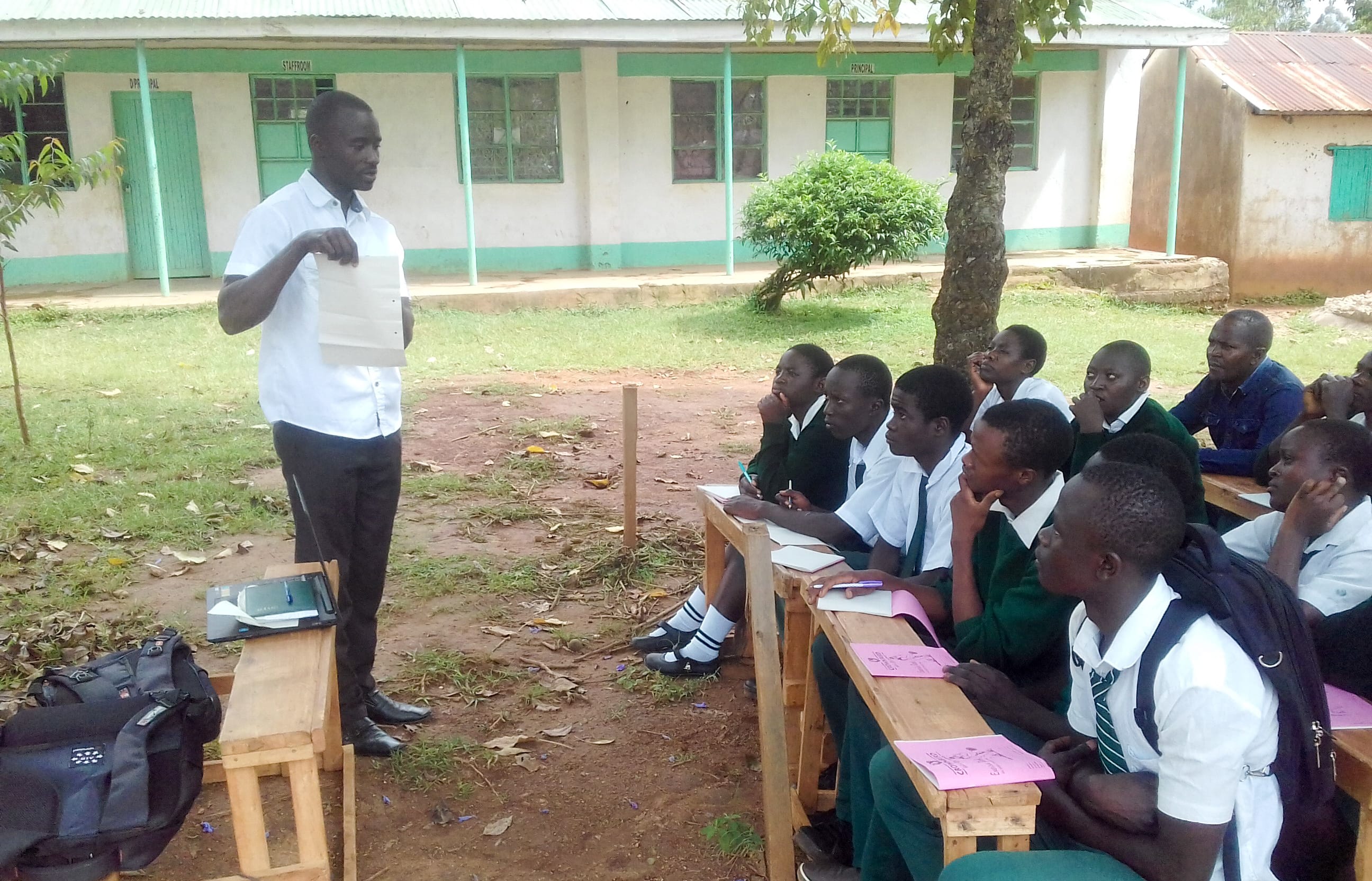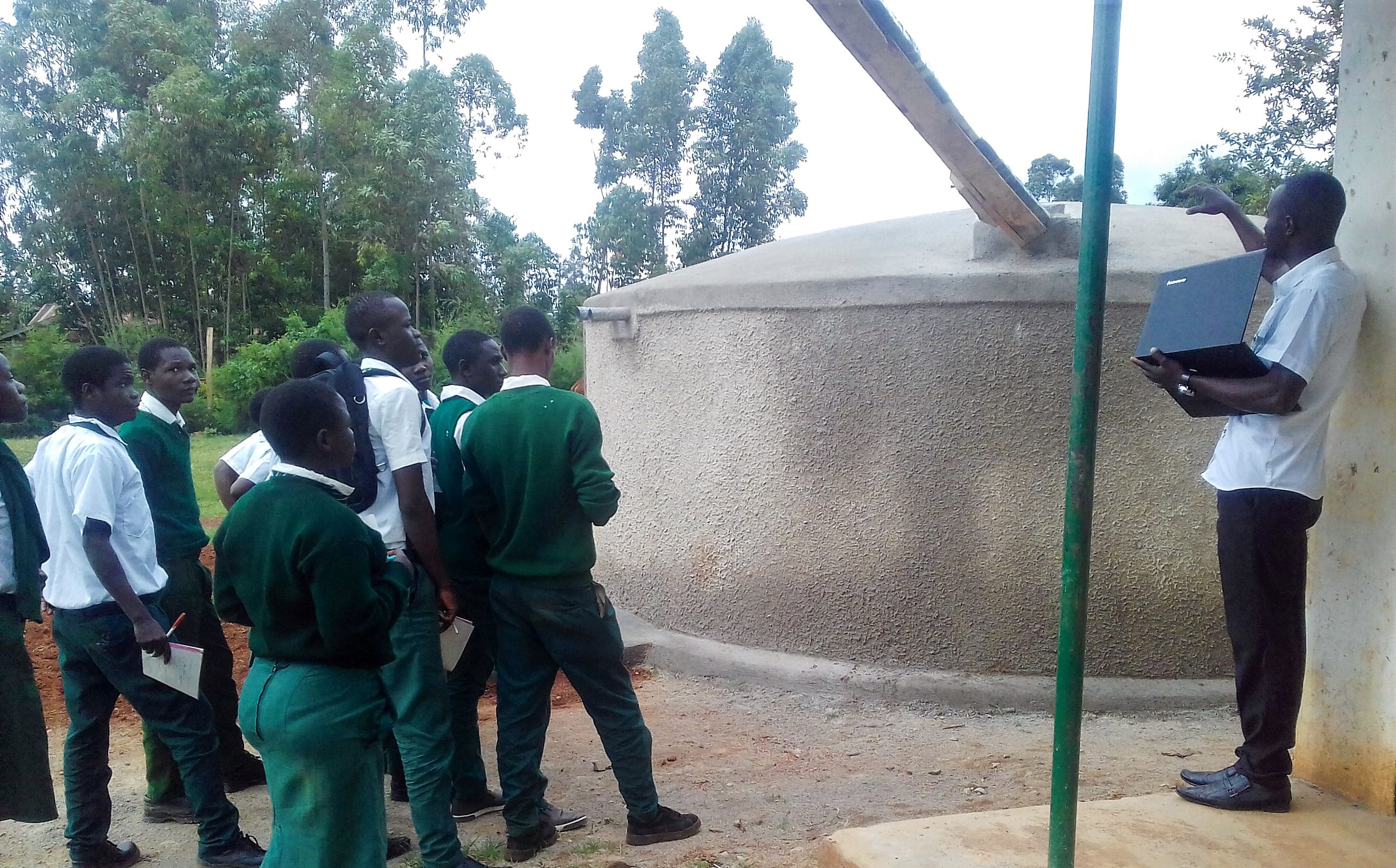Mulwakhi Secondary School is situated on Luanda Emusire Road. The students normally report for school at exactly 6:30am and leave at 6pm each evening. A normal day starts with morning assembly when teachers make announcements, then normal classes, at 8am. The school started in 2014, meaning that this is the first year they'll have students taking college entry exams. The school has a total of 130 students, not a big number, but is growing each year.
There are seven teachers, two security officers, and one school cook.
We connected with the school through quite a chain of people. A student at this school received clean water through a spring protection project in his community. He shared more information about us with his classmate, whose father is one of the security guards, Mr. Ainea Gongo. He then shared our contact information with the headteacher, who contacted us directly to ask for help.
Water Situation
Mulwakhi Secondary School has no water. To keep running, they must send students out into the community to find water to use for drinking, cooking, and cleaning. Students report that they always walk to Mulwakhi Spring to get their water because it's protected from contamination. However, students have open containers that they lug all the way back to school, and these containers are dirty and uncovered. The administration is concerned that water is contaminated by the time it's consumed.
Students are often out sick with diarrhea, whether it's the dirty water they're drinking or the poor hygiene and sanitation at the school. Either way, students are missing class just to fetch this dirty water and bring it back.
Sanitation Situation
The school has three latrines, one of them for boys and the other two for girls. There is no latrine set aside for staff. Students have to line up for a long time until it's their turn, and some can't bear the wait and have to seek privacy elsewhere. The pits are almost full, and the doors are coming off their hinges.
There is nowhere for students to wash their hands after. Ainea Gongo is not only a security guard at the school, but is a concerned parent who told us, "The students have always had a bad tendency of going to the toilets and not washing their hands. After that, this has led to frequent cases of stomach pains and diarrhea. This can be avoided by having a hand-washing tank in place such that students wash their hands immediately after visiting the toilet. There is also a belief that soap is not used while washing hands; this can be taught to the entire community, the advantages of washing hands with soap."
What we can do:
Training and Handwashing
Training will be held for two days. The facilitator will use PHAST (participatory hygiene and sanitation transformation), ABCD (asset-based community development), CTC (child to child), lectures, group discussions, and handouts to teach health topics and ways to promote good practices within the school. The CTC method will prepare students to lead other students into healthy habits, as well as kickstart a CTC club for the school. This CTC club will oversee the new facilities, such as handwashing stations, and make sure they are kept clean and in working condition. The two handwashing stations will be delivered to the school, and the club will fill them with water on a daily basis and make sure there is always a cleaning agent such as soap or ash.
VIP Latrines
Two triple-door latrines will be constructed with local materials that the school will help gather. Three doors will serve the girls while the other three serve the boys. And with a new source of water on school grounds, students and staff should have enough to keep these new latrines clean.
Rainwater Catchment Tank
A 50,000-liter rainwater catchment tank will help alleviate the water crisis at this school. The school will also help gather the needed materials such as sand, rocks, and water from the spring for mixing cement. Once finished, this tank can begin catching rainfall that will be used by the school’s students and staff. Students will no longer be responsible for going out into the community to find water.
We and the school strongly believe that with this assistance, standards will significantly improve. These higher standards will translate to better academic performance!
This project is a part of our shared program with Western Water And Sanitation Forum (WEWASAFO). Our team is pleased to provide the reports for this project (edited for clarity) thanks to the hard work of our friends in Kenya.

 Rainwater Catchment
Rainwater Catchment
 Rehabilitation Project
Rehabilitation Project




































